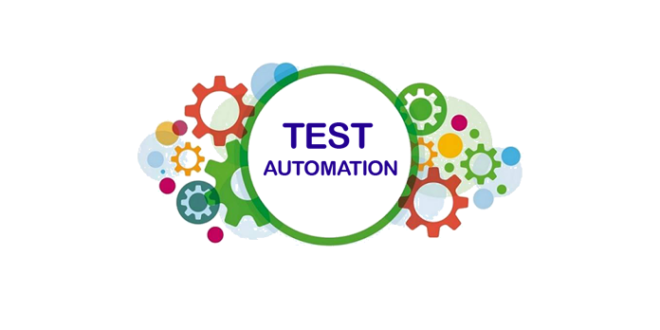From Manual to Automated Screening: A Comprehensive Overview to Transitioning Efficiently and Properly
In the world of software application screening, the shift from guidebook to automated processes has actually ended up being a progressively important change for organizations seeking to enhance efficiency and accuracy in their testing practices. The trip from handbook to automated testing is not without its obstacles, however when approached tactically and with a clear strategy in mind, the benefits can be substantial.
Benefits of Automated Examining
Automated testing supplies various benefits, enhancing effectiveness and precision in software growth processes. One key advantage is the significant decrease in screening time. Automated tests can be run all at once on multiple gadgets and running systems, substantially speeding up the screening stage contrasted to manual testing. This boosted performance enables faster feedback on the high quality of the software program, enabling developers to determine and attend to concerns promptly.
Moreover, automated testing ensures a higher level of precision in spotting problems. Since automated tests comply with predefined manuscripts, human mistake is lessened, causing more reputable test results. Consistency in testing is likewise improved, as automated tests implement the very same actions exactly each time they are run. This consistency is crucial in ensuring that all functionalities of the software program are extensively checked, minimizing the possibility of undetected pests sliding through to manufacturing.
Selecting the Right Devices

To start with, analyze your goals and demands. Recognize the scope of your job, the modern technologies included, and the ability of your group. This analysis will assist you figure out the abilities and features you require in your screening devices.
Secondly, consider the compatibility of the tools with your existing systems and procedures. Seamless integration with your existing software application development lifecycle is important to ensure a smooth shift to automation.
Furthermore, evaluate the scalability and adaptability of the tools. As your testing requires develop, the devices must be able to adjust and accommodate adjustments effectively.
Last but not least, consider the support and area around the tools. Durable support and an energetic user area can offer beneficial resources and help when executing automated screening. By very carefully thinking about these aspects, you can pick the right tools that align with your needs and set the phase for a successful transition to automated screening.
Composing Reliable Examination Manuscripts

When crafting test manuscripts, it is vital to take into consideration the specific demands of the software program being tested and make sure that the manuscripts address all critical performances. Clear and detailed calling conventions for test scripts and examination cases can boost readability and maintainability. Furthermore, integrating error handling mechanisms within the test manuscripts can aid in determining and resolving problems quickly.
Moreover, organizing test scripts right into modular parts can boost reusability and scalability, lowering redundancy and improving effectiveness in test manuscript upkeep. Normal evaluations and updates to test scripts are critical to equal advancing software link application requirements and capabilities. By complying with these concepts, testers can create durable and effective test scripts that add substantially to the success of automated screening procedures.
Integrating Automation Into Workflows
By flawlessly integrating automated screening tools like Selenium or Appium right into the software growth lifecycle, teams can accomplish faster feedback on code modifications, leading to quicker This Site pest detection and resolution. This integration allows for continuous testing throughout the advancement process, making certain that any type of issues are determined early on, resulting in higher software program quality. Appropriate combination of automation tools calls for collaboration between advancement, screening, and operations teams to establish a unified process that maximizes efficiency and performance in supplying high-grade software application products.
Ensuring a Smooth Shift
Effectively transitioning to automated testing entails meticulous preparation and cautious execution to take full advantage of and lessen disturbances efficiency in the software growth procedure - automation testing. To guarantee a smooth change, it is important to begin by performing a thorough assessment of the present screening processes and identifying areas where automation can bring the most substantial benefits. Engaging with all stakeholders beforehand at the same time, consisting of designers, testers, and task supervisors, is crucial for garnering assistance and buy-in for the automation campaign
Interaction is essential throughout this shift stage. Clear interaction of the objectives, advantages, and expectations of automated screening assists to manage any type of resistance or worries that might occur. Additionally, providing appropriate training and sources for employee to upskill in automation devices and strategies is vital for making sure an effective transition.

Verdict
To conclude, transitioning from manual to automated testing offers numerous benefits, consisting of raised performance and dependability. By choosing the ideal tools, composing efficient test manuscripts, and incorporating automation effortlessly into workflows, organizations can ensure a effective and smooth transition. It is necessary to accept automation as a valuable property in software application testing processes to boost general quality and performance.
In the world of software program screening, the change from manual to automated processes has become a progressively essential transition for companies seeking to enhance performance and precision in their screening methods. Automated tests can be run concurrently on numerous gadgets and operating systems, significantly speeding up the screening stage contrasted to hand-operated testing. Consistency in testing is additionally boosted, as automated tests perform the exact same actions precisely each time they are run.To guarantee the successful execution of picked testing tools, the creation of effective examination manuscripts plays a crucial function in verifying the functionality and performance of automated procedures - automation testing. By complying with these principles, testers can develop effective and durable examination scripts that add considerably to the success of automated testing processes